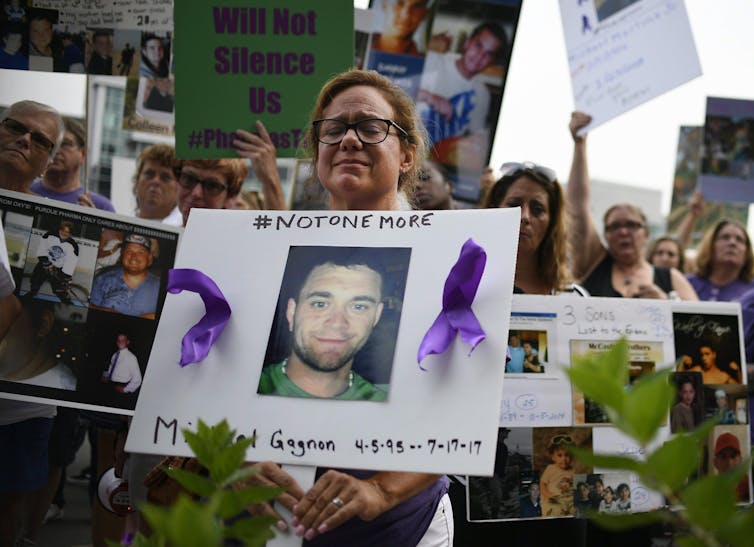Why Big Pharma must disclose payments to patient groups: »ĆÉ«Ö±˛Ą expert

Published: January 15, 2019
A United States revealed last year that five opioid manufacturers made more than $10 million in payments to patient advocacy groups and professional societies between 2012 and 2017.
Initiatives from these advocacy groups and professional societies often echoed and amplified recommendations to increase opioid use. For example, they promoted opioid for chronic pain, minimized the risk of addiction and criticized the to limit opioid prescriptions.
In addition, opioid manufacturers used these groups to lobby Congress to change laws directed at curbing opioid use. This, according to the report, “may have played a significant role in creating the necessary conditions for the U.S. opioid epidemic.”
Patient advocacy groups play an important role in democratic societies, giving voice to vulnerable populations, shaping health policy debates and acting to influence public policies to promote their members’ interests and needs.
When funded by the industry, however, they often serve merely as a marketing tool – promoting corporate interest.
To date, in Canada, there has been no attempt to systematically investigate the relationships between opioid manufacturers and pain advocacy groups and societies. However, evidence shows that, similar to the U.S., opioid manufacturers fund such organizations in Canada.
Advocacy groups echo corporate interest
In , bioethicist Sharon Batt explores the alliance between patient-group advocacy and pharmaceutical companies in Canada. She suggests that this relationship can distort policies that have been put in place to protect public health.
Batt questions the ability of such groups to speak on behalf of people who need help, and shows how advocacy groups today echo the demands of pharmaceutical companies that are often counter to its members' interests.

For example, in 2005 the , supported by an unrestricted educational grant from Purdue Pharma Canada, the manufacturer of OxyContin. A conference held by the same society in 2007 included a .
In another case, the , including Purdue Canada.
A on the association’s website contains messages favourable to increased opioid use and criticizes arguments questioning opioid effectiveness, calling it “anti-opioid hysteria and propaganda” caused by prominent “anti-opioid activists.”
Two years ago, to Canadian health-care organizations, some of which could have been patient groups. (The way the information is reported doesn’t allow us to identify which health-care organizations received money.)
All payments should be disclosed
We believe this marketing tactic is undesirable and might have contributed to the opioid epidemic in Canada as it did in the U.S.
Furthermore, using the vulnerability and the suffering of patients as a tool for maximizing profit is morally wrong.
Lack of transparency surrounding the advocacy groups is a real problem. Neither the industry nor advocacy organizations are required to fully and routinely disclose their financial ties.
Indeed, some patient organizations question why they should disclose sources of donations in the first place. : “We do not see the purpose of asking how much money has been contributed by any entity that may have an interest” in a recommendation about whether a drug should be funded by a provincial drug plan.
We call for the Canadian government to examine and disclose all payments from pharmaceutical companies to non-profit patients’ advocacy groups and societies.![]()
Note: This is an updated version of a story originally published Jan. 13. The earlier story included a reference to payments to the Chronic Pain Association of Canada by Eli Lilly Canada and Merck Frosst Canada. Both provided funding to the association, but neither company manufactures or sells opioids now, nor did they at the time they made these grants.
is an emergency physician at University Health Network, an associate professor of family and community medicine at the and a professor emeritus of health policy and management at York University. is a PhD candidate in interdisciplinary graduate studies (public health and political science) at the .
This article is republished from under a Creative Commons license. Read the .



